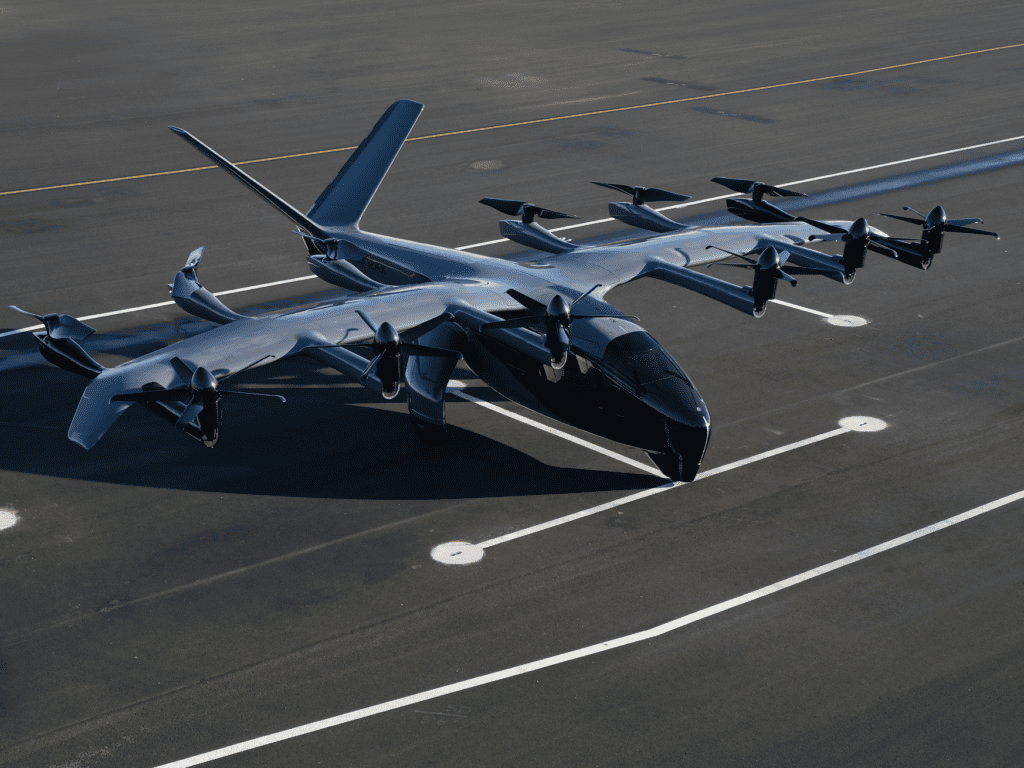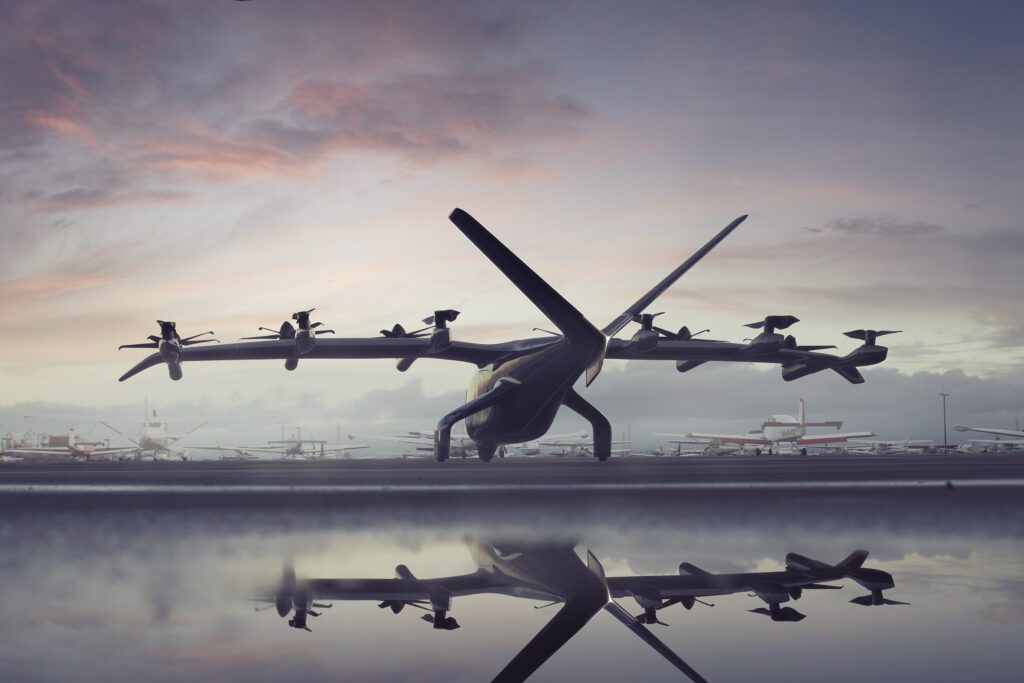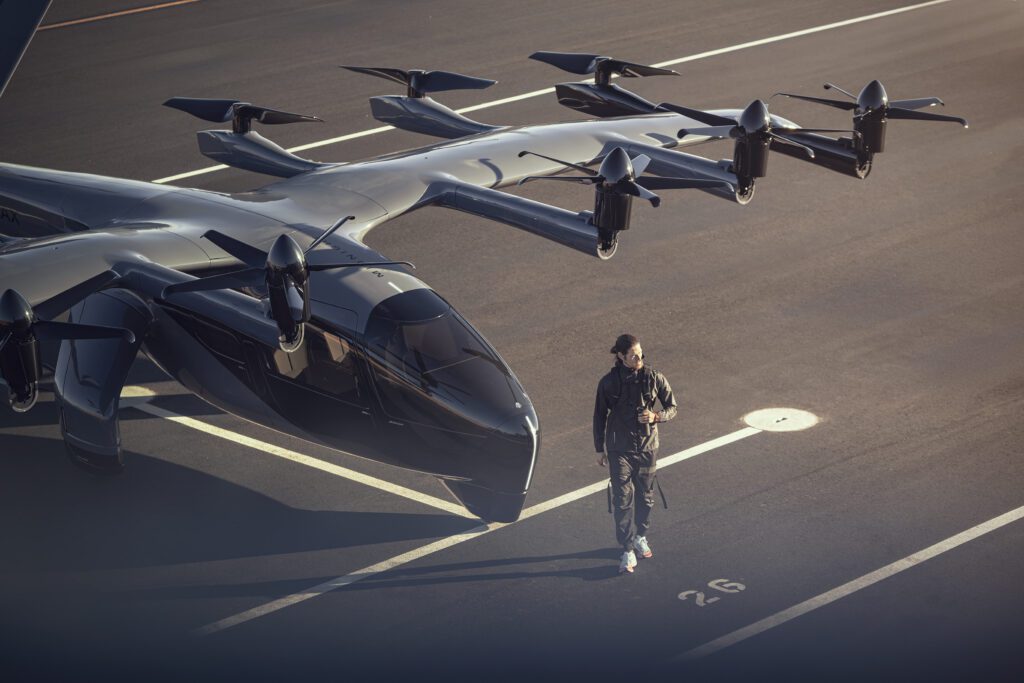In the run-up to the unveiling of their inaugural production eVTOL (Electric Vertical Takeoff and Landing) aircraft in Silicon Valley, the team at Archer Aviation was determined to select a name that would establish a deep emotional connection with their creation. Rather than opting for a conventional combination of letters and numbers, a practice long ingrained in aviation nomenclature, they sought a name that would set their aircraft apart, infusing it with distinctiveness and boldness.
Adam Goldstein, the founder and CEO of Archer, expressed their unique vision, stating, “A lot of aircraft are built around utility. We wanted to create an aircraft that could create an emotional response. We took an entirely different approach … and wanted to give it a name that was also different than a typical aircraft name.”
In this pursuit of an exceptional name, Archer settled upon “Midnight,” a choice that seems perfectly suited to the futuristic eVTOL. The Midnight eVTOL is designed to accommodate up to five individuals, including a pilot and four passengers, and is poised to enter service, ferrying customers, by the year 2025.
Goldstein elaborated on their rationale, noting, “We thought that would be a really great way for people to start emotionally connecting with these products. Because we do believe these products are going to be widely available, and people [will be] taking them on a daily basis.”
The official introduction of the Midnight took place at an open house event in Palo Alto, California, on November 17th. While the aircraft is not set to commence test flights until the first half of the following year, it bears a striking resemblance to Archer’s two-seat Maker prototype. The Maker continues to conduct daily test flights and serves as a proving ground for the aircraft’s proprietary “12-tilt-six” propulsion system.
Both the Maker and the Midnight are characterized by a configuration featuring 12 rotors that operate approximately parallel to the ground during takeoff, with six rotors tilting forward to provide thrust during forward flight. This shared design serves to validate the core technologies behind these vehicles.
Notably, the Midnight boasts a larger payload capacity, exceeding 1,000 pounds (454 kilograms). It is optimized for consecutive trips of approximately 20 miles (32 kilometers), with a quick 10-minute charging interval between flights and a top speed of 150 miles per hour (241 km/h). Safety is a paramount consideration in the aircraft’s design, featuring high redundancy and simplified propulsion systems, making it significantly safer than traditional helicopters.
Furthermore, Midnight is engineered to operate at an altitude of roughly 2,000 feet (610 meters), emitting noise levels of approximately 45 A-weighted decibels, nearly 1,000 times quieter than a typical helicopter. This quiet operation is achieved through the alignment of its tilt propellers with the oncoming airflow, reducing noise levels, and the ability of its small propellers to spin at lower tip speeds compared to helicopters.
In line with a commitment to environmental sustainability, Midnight’s seats are crafted from flax fiber and incorporate recycled materials, including fabric made from recycled plastic bottles.
Archer’s progress towards the certification of Midnight with the U.S. Federal Aviation Administration (FAA) is on track for completion in late 2024. If all proceeds as planned, Midnight eVTOL aircraft will be integrated into Archer’s urban air mobility (UAM) network, scheduled for launch in 2025.
In the interim, Archer will continue its flight testing efforts with the Maker prototype, aiming to complete a full transition flight in the coming weeks. The insights gained from Maker’s test program have played a crucial role in the development of Midnight.
Archer envisions manufacturing 250 Midnight eVTOLs in the initial year of production at its facility in Covington, Georgia, situated approximately 55 kilometers east of Atlanta. The company has ambitious plans for the Covington facility, with the potential to scale production to 650 aircraft annually in its first phase and potentially thousands per year in its second phase.
Looking ahead, Archer aspires to deploy 6,000 aircraft by the year 2030. While Goldstein didn’t provide concrete details about overseas expansion, he acknowledged that they are focused on obtaining FAA certification and entering the U.S. market but remain open to considering international ventures in the future.










